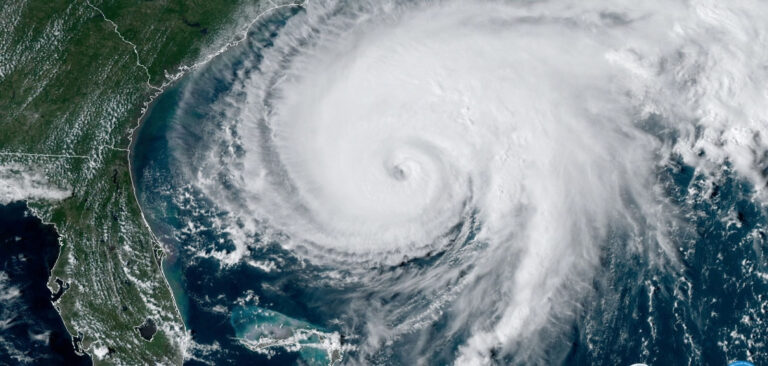With the arrival of June comes the start of the Atlantic Hurricane season and, in 2020, the USA’s National Oceanic and Atmospheric Administration (NOAA) will be using new satellite data to inform its forecasting.
The Constellation Observing System for Meteorology, Ionosphere and Climate (COSMIC-2) is a new fleet of six small satellites launched last June. The COSMIC-2 system relies on analysis of GPS signals to deduce atmospheric data, using a technique called radio occultation.
GPS satellites constantly transmit signals down to receivers on Earth, but those signals get distorted along the way because the density of Earth’s atmosphere changes with height. COSMIC-2 satellites can detect and measure any small bends in those signals before they are cut off by Earth’s horizon.
The three-minute period before the radio signal is cut off is known as radio occultation, and that data is what gives scientists near real-time information about Earth’s atmosphere including conditions such as: temperature, pressure, density of water vapor. As a bonus, COSMIC-2 also improves space weather monitoring by providing unprecedented coverage of the low-latitude ionosphere.
Since May 26, the constellation has been feeding more than 4,000 vertical sets of measurements of atmospheric temperature and humidity in the tropics and subtropics daily into NOAA’s forecast models. Measuring the moisture in and around tropical cyclones is important because it is a key ingredient for their development and intensification.
Louis Uccellini, director at NOAA’s National Weather Service, said this data will help with the prediction of tropical storms: “High-resolution wind vector data along with moisture measurements will give us more and better information about the conditions that strengthen or weaken these storms.”
NOAA will use COSMIC-2 data, combined with information from its advanced Joint Polar Satellite System, the European Metop spacecraft and the significantly improved high-resolution wind data from NOAA’s next-generation geostationary satellites, GOES-16 and GOES-17; and Japan’s Himawari-8 satellites in its hurricane forecast models.
Additionally, NOAA is currently involved in a Commercial Weather Data Pilot effort, where it purchases space-based, radio occultation data — similar to that which COSMIC-2 provides — from private-sector companies to assess the data’s quality and its potential value to NOAA’s weather forecasts and warnings. This commercial-sector radio occultation data could in future augment the data NOAA obtains from COSMIC-2.



